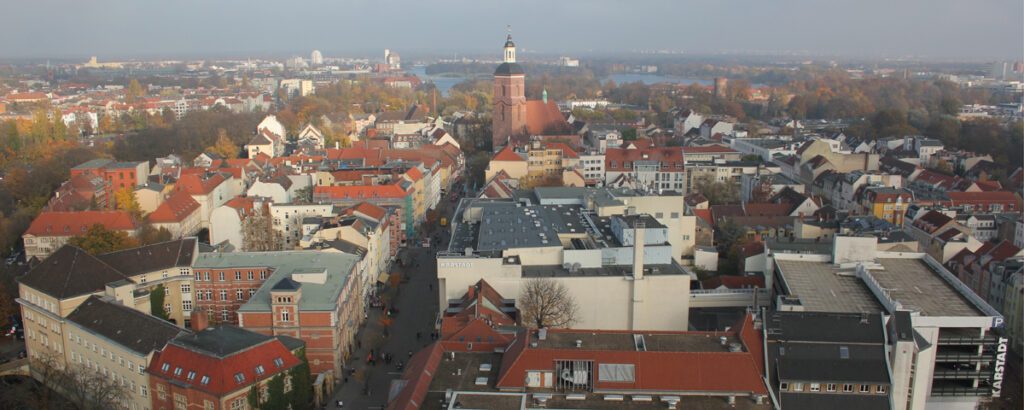Study: Spandau Old Town has potential for solar power
October 28th 2020 | In the project “Solar Study Old Town Spandau”, RLI determined the potential for photovoltaics on the roof surfaces of the Old Town of Spandau.
Despite a high proportion of listed buildings, the technical photovoltaic potential of the Old Town of Spandau is up to 2.53 MW. This is the result of a study that RLI conducted commissioned by the district. With this potential, a theoretical annual power generation of 2.1 GWh would be possible, which would cover 17.5 percent of the total power consumption of the Old Town of Spandau.
Energy Transition in urban areas
Berlin has set itself the goal of becoming climate-neutral by the year 2050. To achieve this goal, renewable energy in the city must be expanded considerably. In densely populated areas, solar energy is usually the best option for generating electricity from renewable sources – the many roof surfaces are ideal locations for photovoltaic systems. Based on a study by the Fraunhofer Institute for Solar Energy System (ISE), which attested Berlin a solar power potential of 25 percent, a photovoltaic capacity of 4,400 MWp would have to be installed in Berlin by the target year 2050 to be able to generate around 3,889 GWh of solar power per year.
Potential analysis in several steps
The Berlin districts independently check where suitable roof areas for photovoltaics are located and how homeowners can be supported in using them. In the case of the Old Town of Spandau, the RLI’s Transformation of Energy Systems Research Unit took on the task of determining the need and the existing potential. To this end, existing photovoltaic systems in the Old Town were identified, their current output was determined and then the potentially usable roof areas and their suitability were evaluated. In addition, a detailed investigation was conducted for four private and three district-owned buildings to determine how solar systems can be installed and operated. This resulted in concrete recommendations for action for the Spandau district office.
Historic preservation is not an exclusion criterion but a challenge
The Old Town of Spandau has the special feature of a large stock of old buildings, some of which are listed buildings. This also applies to two of the public buildings, which were examined in detail. Consideration of the protection of historical monuments was an explicit part of the study in order to gain insights into how such special structural conditions and the goal of climate protection can be reconciled.
In detail, it turned out that 51 percent of the approximately 500 buildings are very well or well suited for the construction of photovoltaic systems. 14 percent are only suitable under certain circumstances, 35 percent are unsuitable. The main exclusion criteria were obstructive roof structures and conditions imposed by historic conservation authorities. For the majority of the listed buildings, solar power systems could still be constructed in such a way that they do not violate the regulations and are still economical.
Self-use of solar power is generally recommended
Good profitability was achieved primarily with models for self-consumption and tenant flow models, whereby the tenant flow model is heavily dependent on the number of participating rental parties. In contrast, the full feed-in operating model did not prove to be economically viable in any of the detailed considerations.
The conclusion of the RLI study: Even with small roof areas and high shading, an amortization of the system was realistic in the cases considered in the Old Town of Spandau with the self-consumption model and correspondingly high self-use of the electricity.
To the press release of the Spandau district authority
To the project page
Full study (in German)
